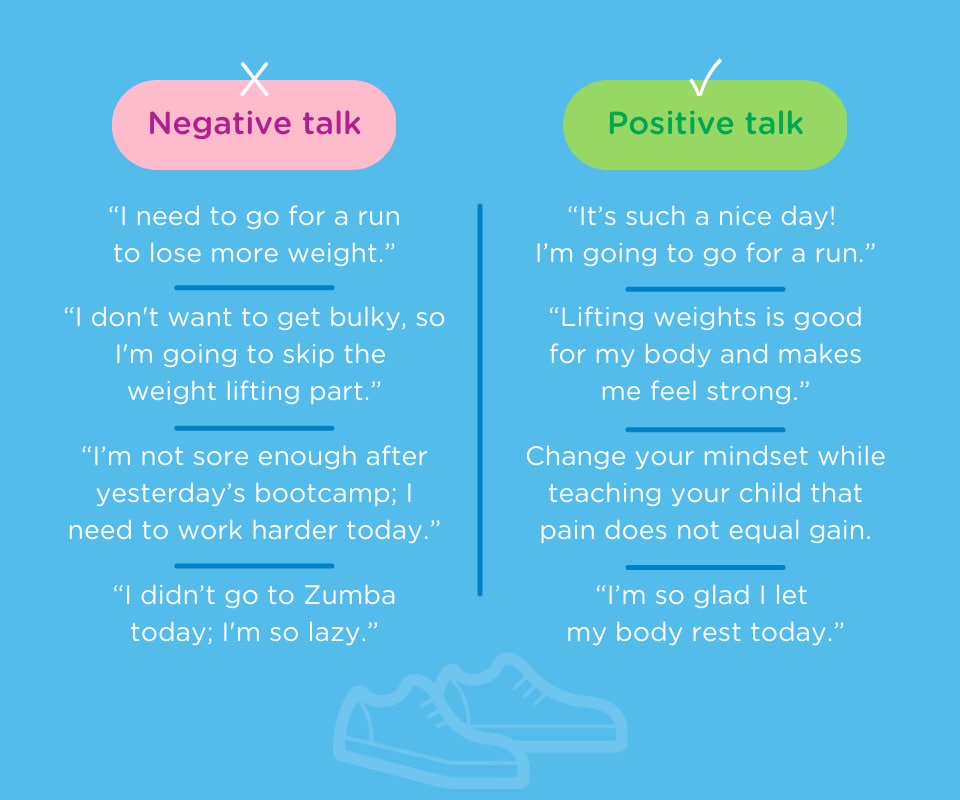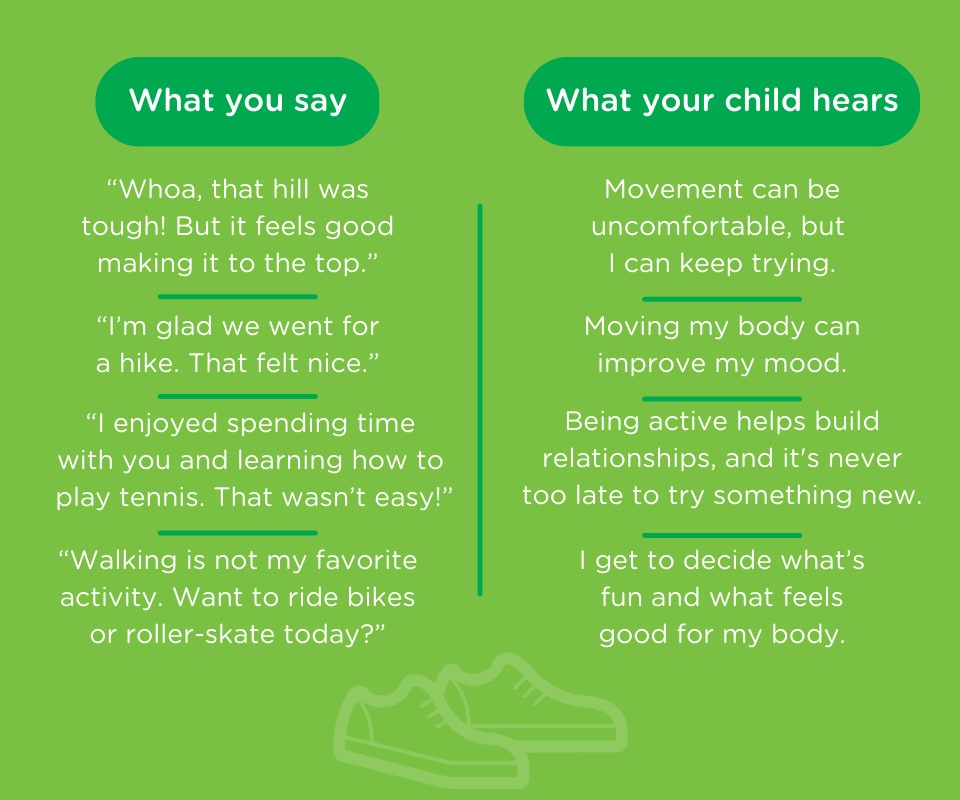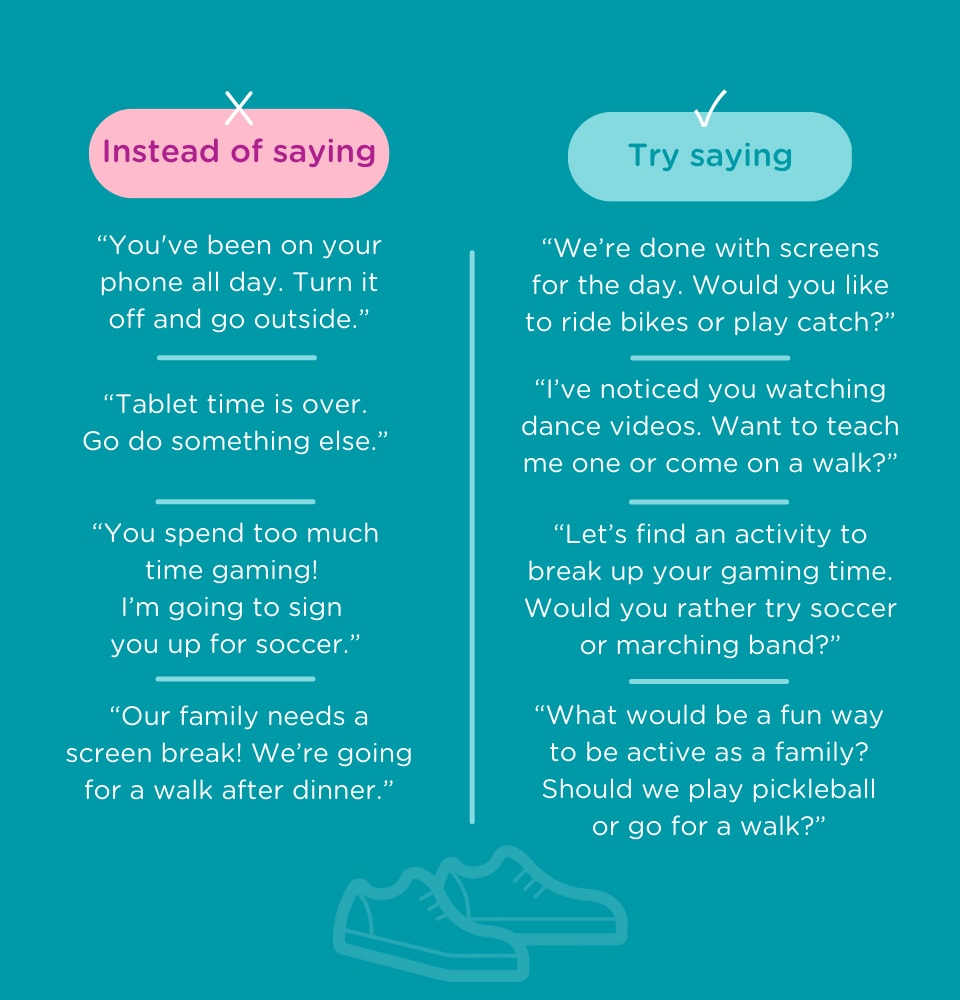6 Ways to Help Your Child Be Active
Just like food, water and sleep, movement is a daily need. (For kids and grown-ups alike!) Sometimes it can be hard to encourage kids to be active. But our experts are here to help you and your child find the joy in movement.
Read on for tips on how to be a role model for movement and fostering a positive attitude toward movement for kids.
In this article:

Separate movement from kids' body image
Before a child can develop a healthy relationship with movement, we have to separate movement from kids’ body image. They need to know that being active is not about the way bodies look. Instead, movement is about the way bodies feel and how we benefit from being active.
As the caregiver, it’s your job to help teach kids that movement is about helping them:
- Feel strong and confident
- Get quality sleep
- Increase their energy level, making it easier to focus
- Release feel-good chemicals (endorphins) to help boost their mood
- Cope with their feelings and help take their mind off their worries
Talk about movement in a positive way
The things grown-ups say about movement have a direct effect on kids’ relationship with their bodies, being active and practicing healthy habits. It’s important to think about your own relationship with being active in order to help your child build a healthy foundation with movement.
One of our top tips for encouraging your child to be active is to talk about movement in a positive way. To shift the way you talk about movement, try these message makeovers.

Never use movement to shame or punish
One of the fastest ways to build an unhealthy relationship with movement for kids is to take the fun out of it. Movement is a daily need; it’s not something to be earned or taken away. And it’s definitely not something we should use to shame or punish kids.
Using movement to punish kids:
- Sends the message that being active is something you do (or get taken away) when you’ve done something wrong.
- Can make kids dread, avoid or even hate moving their bodies.
- Could lead to a lifelong negative attitude toward being active.
Using movement to shame kids:
The way someone decides to move is up to them. Nobody is perfect, especially when they’re learning something new. So when kids are moving their bodies, don’t show judgment or suggest that they’re “doing it wrong.” This will probably embarrass them, taking the fun out of it and leading to a negative connection with activity.
How to be a positive role model for movement
If you’re wondering how to be a positive movement role model for kids, the best way is to get moving with them. That’s because:
- It’s easier to follow someone’s actions and behavior than it is to follow someone’s instructions (especially for little ones).
- Being active with your child not only builds their confidence to move more but is also a perfect opportunity to build connections with kids.
Movement may not always be easy or comfortable, but letting kids see us be vulnerable is a great start in being a role model for healthy habits. Showing children that adults sometimes struggle with an activity only helps our children relate and learn more.


Make movement fun
Kids are more likely to lead an active lifestyle if they enjoy movement.
You can help your child figure out activities they like by showing them different types of movement. (It’s best to start young, but it’s never too late to try new things!) Not only will a variety of activities help you learn what your child enjoys, but being active also contributes to their social, emotional and brain development . Being active also helps kids develop their fine and gross motor skills.
Try these activities with kids:
- Help them learn to balance on a scooter or ride a tricycle
- Practice dribbling a ball and walking at the same time
- Throw a Frisbee
- Figure out how to hit a ball with a racket
- Use a Hula-Hoop with your hips, legs or arms
Always remember that movement can be silly and fun, and it doesn’t need to be perfect. It also doesn’t need to be structured or organized. It’s about trying new activities, learning new skills and figuring out what sparks joy for your child.
As your child gets older and becomes more vocal and independent, listen to what types of activity they might want to try. Keep in mind there is usually a learning curve for new activities. It can be scary or uncomfortable, but it’s important to give things a chance.
As parents, we might want our children to stick with an activity for a full session or season because we paid for it, or we want them to keep trying. But if your child continues to dislike the activity or dread going to practice, it’s important to check in and communicate with them.
If an activity is causing mental, emotional or physical distress on a regular basis, it’s OK to make the choice to stop and try something else. It’s all part of their movement journey.
Ask forced choice questions
It’s good to give kids a chance to pick their own activities. This helps them gain independence and find what’s right for them. But it isn’t always easy to motivate kids to move—especially if active time is competing with screen time.
Whether your toddler is begging for more time with the iPad, your grade-schooler is glued to a video game, or you feel like your teen lives in front of a screen, we have a method that could help. If you’re struggling to encourage your child to be active, asking forced choice questions can help set limits while also giving your child some options.

Forced choice questions might sound harsh, but they are a great parenting technique that help you help your child! Offering forced choices is simply giving your child the choice between two options you know you can offer.
Try one of these message makeovers that uses a forced choice question to set screen time limits and replace that time with movement.





